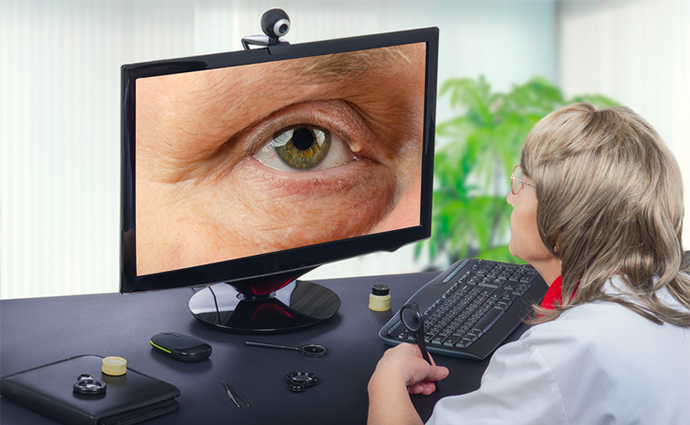Can Telehealth Improve Access to Eye Care in Underserved Populations?
The University of Alabama at Birmingham is launching a program that will use telehealth to improve access to eye exams at federally qualified health centers in Alabama's Black Belt region.

Source: ThinkStock
- Researchers at the University of Alabama in Birmingham will be using a $3.5 million federal grant to study how telehealth can be used to improve diagnosis and treatment of eye diseases in rural and underserved populations.
Led by Lindsay A. Rhodes, MD, an assistant professor in UAB’s Department of Ophthalmology and Visual Sciences, the research team will analyze how federally qualified health centers in some of the state’s most underserved regions use telemedicine technology for detection and care management for glaucoma-associated diseases and other eye diseases, including refractive error, cataracts and diabetic retinopathy.
The research will build off of previous studies that have found that connected health programs can improve access to care for minorities and other underserved populations, thus improving the diagnosis rate for eye-related conditions and, ultimately, clinical outcomes.
“Development of high-quality, accessible, and cost-effective strategies for eye care for these individuals is of critical importance,” Rhodes said in a story published by UAB. “POAG (primary open angle glaucoma) is at least four to five times higher in patients of African descent, progresses more rapidly, and appears about 10 years earlier as compared to those of European descent.”
To reach that population, Rhodes’ team will be working with FQHCs in Alabama’s so-called Black Belt Region, an 18-county swath whose population is more than 50 percent African-American.
“This region is characterized by one of the highest concentrations of people of African descent in the US with high poverty, unemployment and uninsured rates; inadequate educational systems, transportation and community resources; few optometrists who largely practice in retail settings and no ophthalmologists specializing in glaucoma,” Rhodes said. “We have developed and tested a novel multimodal telemedicine approach in our prior CDC-funded Eye Care Quality and Accessibility Improvement in the Community (EQUALITY) study that used comprehensive remote optic nerve assessment.”
That study, conducted in 2015, evaluated the effectiveness of the telehealth platform in treating new or existing African-American adults at risk of developing glaucoma through two Walmart Vision Centers. Study participants were screened for glaucoma at the vision center, and that data was transmitted to a specialist for review and diagnosis.
In their analysis, Rhodes and her colleagues found that a telemedicine platform helped to improve access to eye care among an underserved population, giving them more information about their susceptibility to eye disease and compelling them to seek further care.
“The high level of patient satisfaction with the EQUALITY telemedicine program in the current study is consistent with other telemedicine glaucoma studies, as well as with the literature regarding telemedicine used to diagnose diabetic retinopathy,” they concluded. “Patients also found it convenient to have their exam at the EQUALITY location, which could make it more likely that they will pursue eye care utilization using this model in the future, as the community-based eye care clinic is in close proximity to a large general retailer where patients routinely shop for necessary goods. A majority of patients even expressed that such a convenient location of the eye doctor near a place of shopping may improve their likelihood of pursuing eye care. The combination of convenience through a community-based retail eye clinic and tertiary level care provided by telemedicine is a novel approach to improve eye care utilization.”
The new study shifts the telehealth program from a retail location to an FQHC, giving researchers a more traditional healthcare setting in which to test the model. They’ll also be studying whether “remediation strategies,” such as financial incentives, can move the needle on patient engagement and willingness to get follow-up care.
“Using this program within federally qualified health centers will enable expansion nationwide into rural and urban underserved locations, as these centers provide primary health care services in underserved areas and treat more than 27 million people yearly at over 12,000 sites,” Rhodes said.
